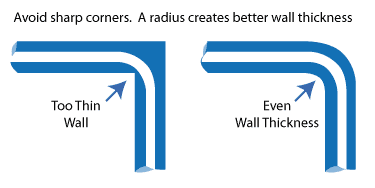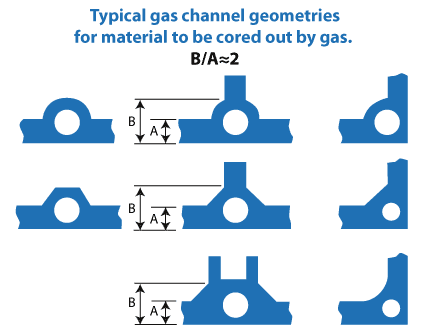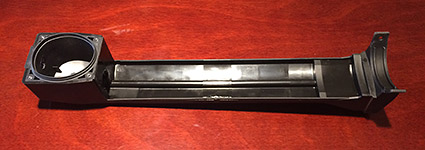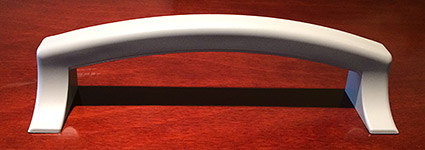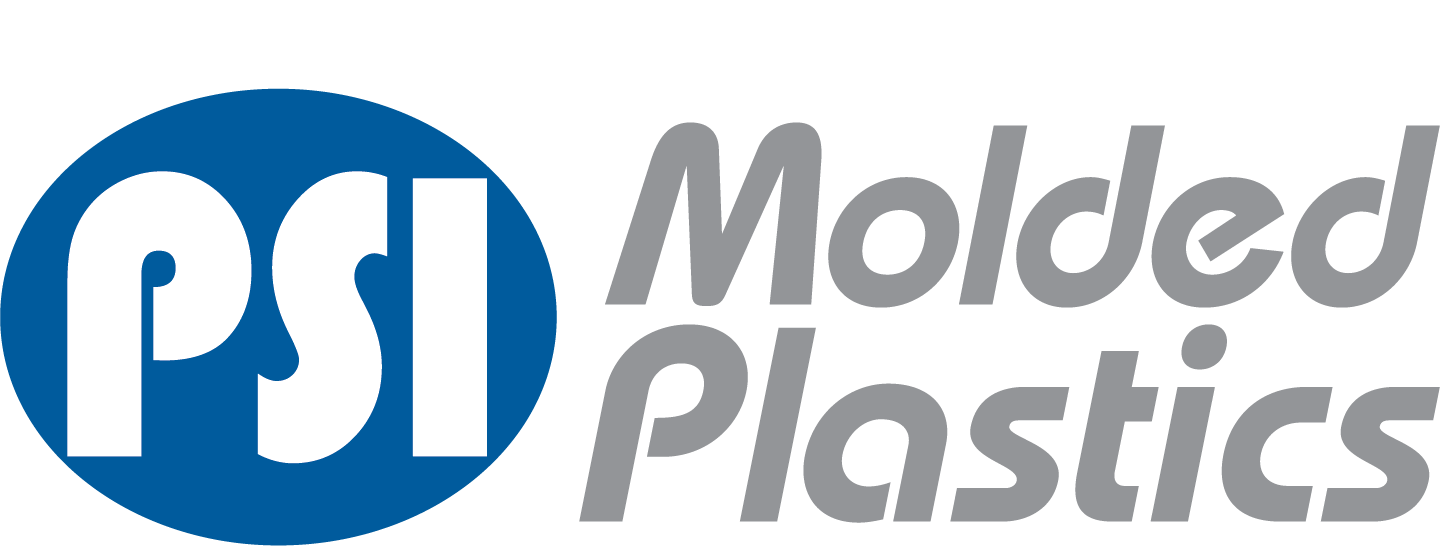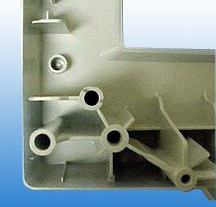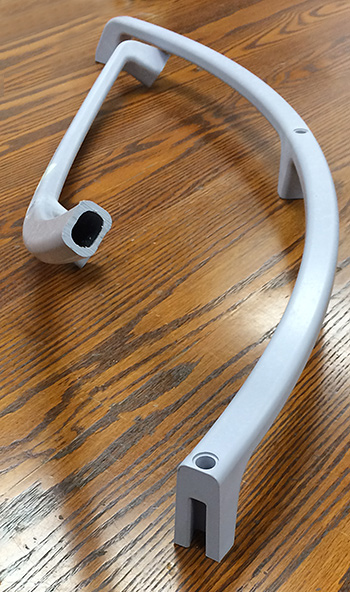Gas Assist Injection Molding
Gas Assist Molding Process
Gas assist is a process used in injection molding whereby a nitrogen bubble is injected into the melt stream to core out the part and leave a hollow tube-like cross section.
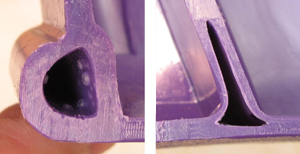
Benefits Include:
Strength - Increased strength and rigidity through the creation of tubular structures in the part geometry.
Weight Reduction - Thick sections can be cored out with gas to reduce weight.
Design Flexibility - Ability to add thick sections as required and core them using gas assist technology.
Surface Finish - Better surface finish than structural foam . . . more like standard injection molding.
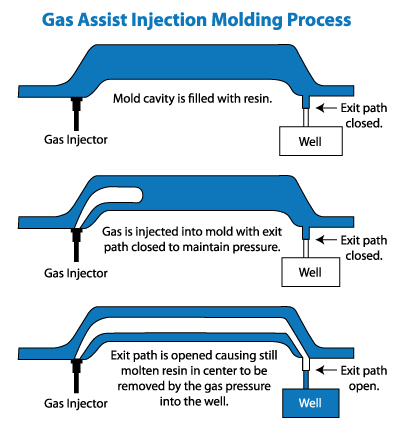
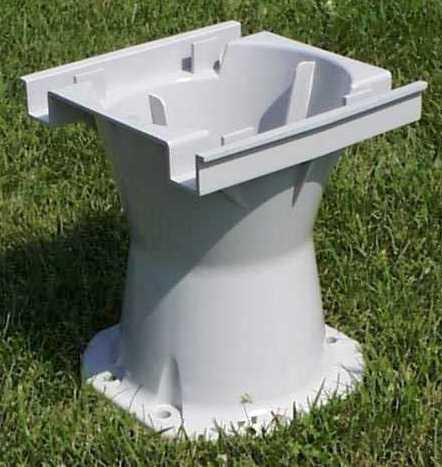
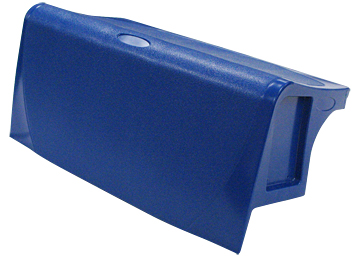
Materials Used in Gas Assist Molding
As with structural foam, most any thermoplastic material can be used in a gas assist application including:• Polycarbonate
• Polyphenylene Oxide - PPO (Noryl)
• Polybutylene terephthalate - PBT (Valox)
• Acrylonitrile Butadiene Styrene – ABS
• High Impact Polystyrene - HIPS
• Polypropylene
• High Density Polyethylene - HDPE
Materials Benefits
• Thermoplastic materials can be recycled. At the molding stage the material can be ground to a small particle size and added in limited portions to virgin resin for molding use.
• Thermoplastic materials can also be ground and used for other post processing applications.
• Post molding finishing such as painting, shielding, decorating impacts the ease of recycling.
• Most common thermoplastics used today are RoHS compliant. Many of these are sold in a global market and are used in consumer products.
Gas Assist Design Considerations
• Gas entry and exit locations: The layout of the gas channels relative to the sprue or gates and flow of the material is critical to the success of the process.
• Typical geometries
• Avoid sharp corners
